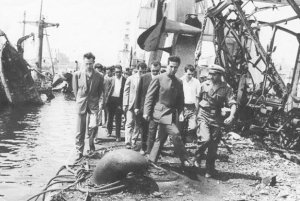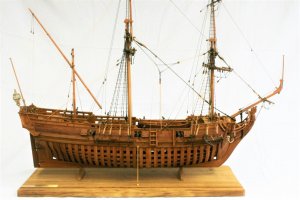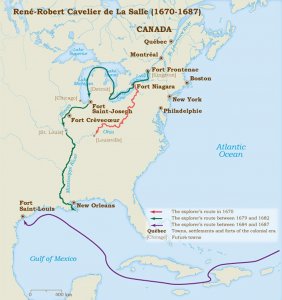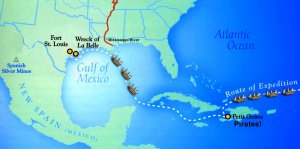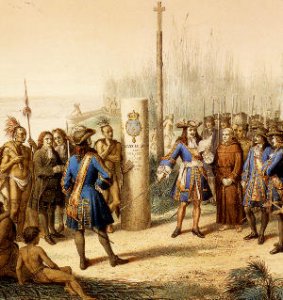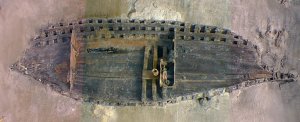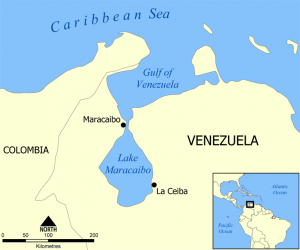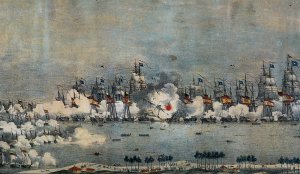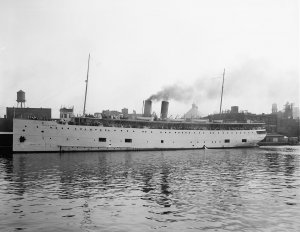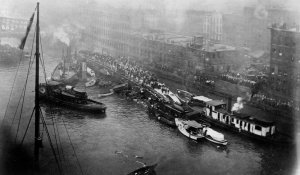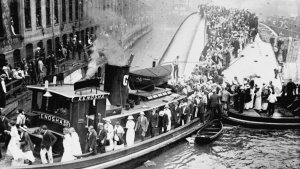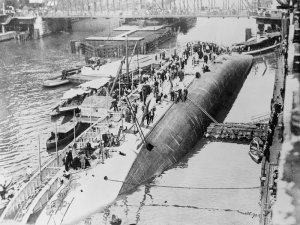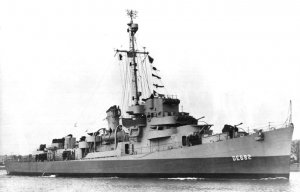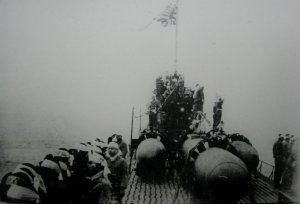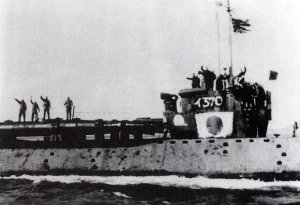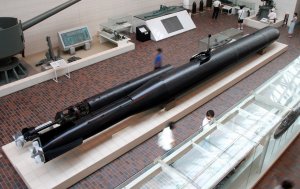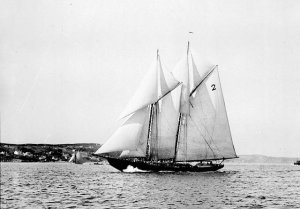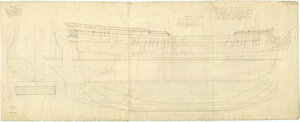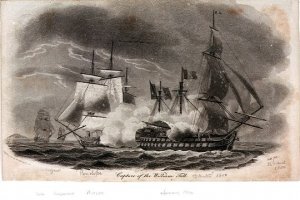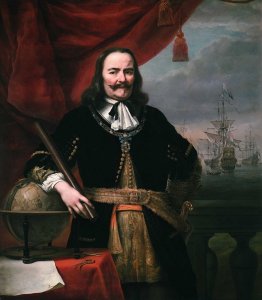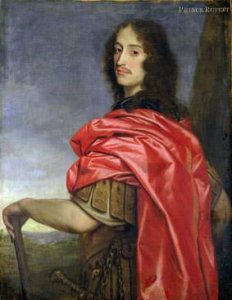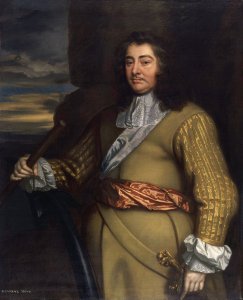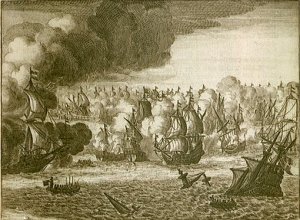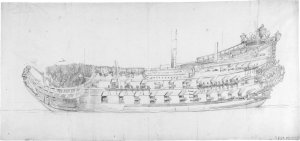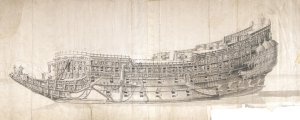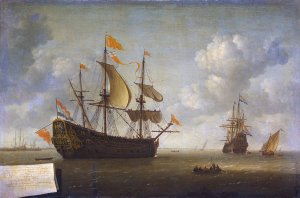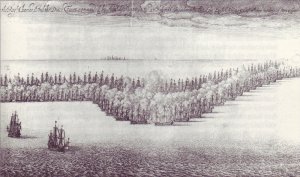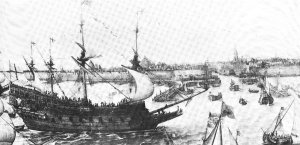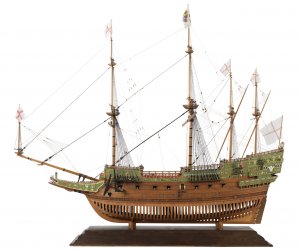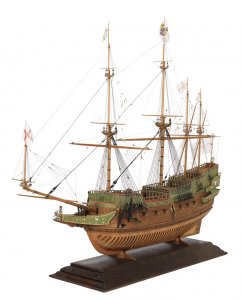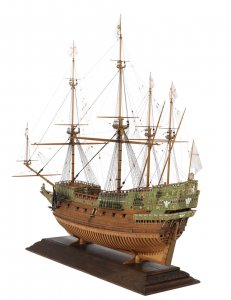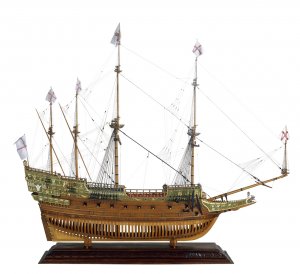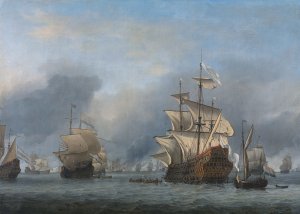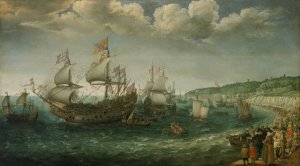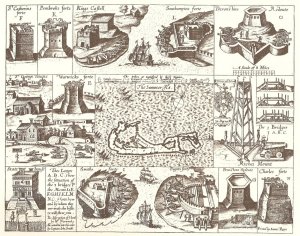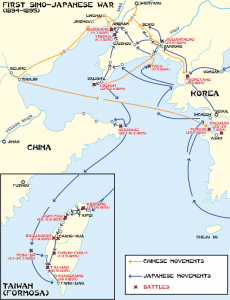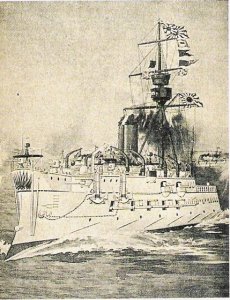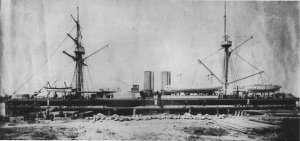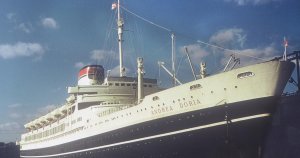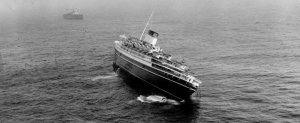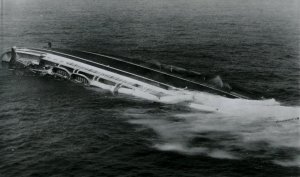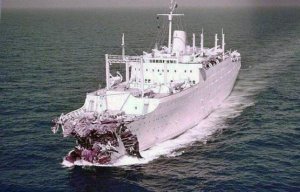22 July 1905 - USS Bennington (Gunboat #4) is wrecked by a boiler explosion at San Diego, Calif. One officer and 65 enlisted men die in the explosion, along with numerous crew injuries.
USS Bennington (Gunboat No. 4/PG-43) was a member of the Yorktown class of steel-hulled, twin-screw gunboats in the United States Navy in the late 19th and early 20th centuries. She was the first U.S. Navy ship named in honor of the town of Bennington, Vermont, site of the Battle of Bennington in the American Revolutionary War.
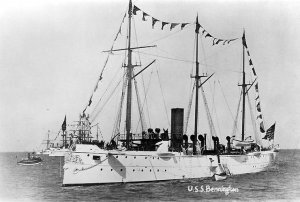
The Bennington, photographed circa 1898 by William H. Rau
The contract to build Bennington was awarded to N. F. Palmer & Co. of Philadelphia in November 1887. Her hull was subcontracted to the Delaware River Iron Shipbuilding & Engine Works which laid down Bennington's keel in June 1888. Bennington was launched in June 1890. She was just over 244 feet (74 m) long and 36 feet (11 m) abeam and displaced 1,710 long tons (1,740 t). She was equipped with two steam engines which were supplemented with three schooner-rigged masts. The ship's main battery consisted of six 6-inch (15.2 cm) guns and was augmented by an assortment of smaller caliber guns.
After her June 1891 commissioning, Bennington was attached to the Squadron of Evolution and for its cruise to South America. The gunboat made two Mediterranean tours between 1892 and 1894, after which she was assigned to the duties in the Pacific. She sailed the Pacific coasts of North and Central America and spent time in the Hawaiian Islands to protect American interests there. On her way to support United States Army operations of the Philippine–American War, Bennington claimed Wake Island for the United States. After two years in the Philippines, she returned to the United States and was decommissioned for 18 months of repairs and refitting. After her March 1903 re-commissioning, most of the next two years were spent patrolling the Pacific coasts of North and South America.
Boiler explosion
On the morning of 21 July 1905, Bennington's crew was preparing her to sail to the aid of the monitor Wyoming which had broken down and was in need of a tow. After her crew had finished the difficult task of coaling the ship that morning, most of them were belowdecks cleaning themselves from the dirty job. Unbeknownst to anyone on board, three problems with one of Bennington's boilers – oily feed water, an improperly closed steam valve, and a faulty steam gauge – were conspiring against them. At about 10:30, excessive steam pressure in the boiler resulted in a boiler explosion that rocked the ship, sending men and equipment flying into the air. The escaping steam sprayed through the living compartments and decks. The explosion opened Bennington's hull to the sea, and she began to list to starboard. Quick actions by the tug Santa Fe — taking Bennington under tow and beaching her – almost certainly saved the gunboat from sinking.
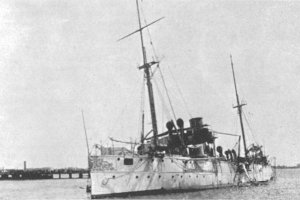
Bennington after the explosion on 21 July 1905 which killed 66 in San Diego
The combination of the explosion and the scalding steam killed a number of men outright and left others mortally wounded; the final death toll was one officer and sixty-five men, making it one of the U.S. Navy's worst peacetime disasters. Nearly all of the forty-six who survived had an injury of some sort; eleven of the survivors were awarded the Medal of Honor for "extraordinary heroism displayed at the time of the explosion". One of the survivors was John Henry Turpin, who had also survived the explosion of Maine in Havana in February 1898 and was, reportedly, the only man to survive both explosions. The sheer number of casualties – the death toll exceeded the U.S. Navy's death toll for the entirety of the Spanish–American War – overwhelmed San Diego's medical facilities, and many burn victims had to be cared for in makeshift facilities tended by volunteers.

Sectional view of the gunboat Bennington – Boston Daily Globe, 23 July 1905
The number of dead also taxed the morticians in San Diego, who were hard-pressed to prepare all of the victims for burial. On 23 July, two days after the explosion, the majority of those killed were buried in the cemetery at Fort Rosecrans. The victims are commemorated by the USS Bennington Monument, a 60-foot (18 m) granite obelisk dedicated in the cemetery on 7 January 1908.
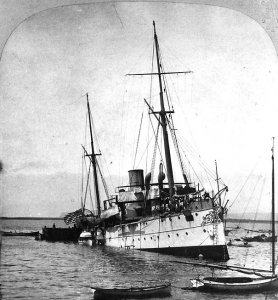
Removing the dead from the ship, following her boiler explosion
In spite of rumors of misconduct by Bennington's engineering crewmen, an official investigation concluded that the explosion was not due to negligence on the part of the crew.
Disposition
After the explosion, Bennington was refloated and towed to the Mare Island Navy Yard. Because of the extent of the damages and the age of the ship, Bennington was not repaired but was instead decommissioned on 31 October 1905. After five years of inactivity, Bennington was struck from the Naval Vessel Register on 10 September 1910 and sold for scrap on 14 November. Bennington was not scrapped but was purchased in 1913 by the Matson Line for use as a molasses barge. She was towed to Honolulu and remained in use there from 1913 until 1924, when she was scuttled off Oahu.
https://en.wikipedia.org/wiki/USS_Bennington_(PG-4)
http://www.navsource.org/archives/12/09004.htm
USS Bennington (Gunboat No. 4/PG-43) was a member of the Yorktown class of steel-hulled, twin-screw gunboats in the United States Navy in the late 19th and early 20th centuries. She was the first U.S. Navy ship named in honor of the town of Bennington, Vermont, site of the Battle of Bennington in the American Revolutionary War.

The Bennington, photographed circa 1898 by William H. Rau
The contract to build Bennington was awarded to N. F. Palmer & Co. of Philadelphia in November 1887. Her hull was subcontracted to the Delaware River Iron Shipbuilding & Engine Works which laid down Bennington's keel in June 1888. Bennington was launched in June 1890. She was just over 244 feet (74 m) long and 36 feet (11 m) abeam and displaced 1,710 long tons (1,740 t). She was equipped with two steam engines which were supplemented with three schooner-rigged masts. The ship's main battery consisted of six 6-inch (15.2 cm) guns and was augmented by an assortment of smaller caliber guns.
After her June 1891 commissioning, Bennington was attached to the Squadron of Evolution and for its cruise to South America. The gunboat made two Mediterranean tours between 1892 and 1894, after which she was assigned to the duties in the Pacific. She sailed the Pacific coasts of North and Central America and spent time in the Hawaiian Islands to protect American interests there. On her way to support United States Army operations of the Philippine–American War, Bennington claimed Wake Island for the United States. After two years in the Philippines, she returned to the United States and was decommissioned for 18 months of repairs and refitting. After her March 1903 re-commissioning, most of the next two years were spent patrolling the Pacific coasts of North and South America.
Boiler explosion
On the morning of 21 July 1905, Bennington's crew was preparing her to sail to the aid of the monitor Wyoming which had broken down and was in need of a tow. After her crew had finished the difficult task of coaling the ship that morning, most of them were belowdecks cleaning themselves from the dirty job. Unbeknownst to anyone on board, three problems with one of Bennington's boilers – oily feed water, an improperly closed steam valve, and a faulty steam gauge – were conspiring against them. At about 10:30, excessive steam pressure in the boiler resulted in a boiler explosion that rocked the ship, sending men and equipment flying into the air. The escaping steam sprayed through the living compartments and decks. The explosion opened Bennington's hull to the sea, and she began to list to starboard. Quick actions by the tug Santa Fe — taking Bennington under tow and beaching her – almost certainly saved the gunboat from sinking.

Bennington after the explosion on 21 July 1905 which killed 66 in San Diego
The combination of the explosion and the scalding steam killed a number of men outright and left others mortally wounded; the final death toll was one officer and sixty-five men, making it one of the U.S. Navy's worst peacetime disasters. Nearly all of the forty-six who survived had an injury of some sort; eleven of the survivors were awarded the Medal of Honor for "extraordinary heroism displayed at the time of the explosion". One of the survivors was John Henry Turpin, who had also survived the explosion of Maine in Havana in February 1898 and was, reportedly, the only man to survive both explosions. The sheer number of casualties – the death toll exceeded the U.S. Navy's death toll for the entirety of the Spanish–American War – overwhelmed San Diego's medical facilities, and many burn victims had to be cared for in makeshift facilities tended by volunteers.

Sectional view of the gunboat Bennington – Boston Daily Globe, 23 July 1905
The number of dead also taxed the morticians in San Diego, who were hard-pressed to prepare all of the victims for burial. On 23 July, two days after the explosion, the majority of those killed were buried in the cemetery at Fort Rosecrans. The victims are commemorated by the USS Bennington Monument, a 60-foot (18 m) granite obelisk dedicated in the cemetery on 7 January 1908.

Removing the dead from the ship, following her boiler explosion
In spite of rumors of misconduct by Bennington's engineering crewmen, an official investigation concluded that the explosion was not due to negligence on the part of the crew.
Disposition
After the explosion, Bennington was refloated and towed to the Mare Island Navy Yard. Because of the extent of the damages and the age of the ship, Bennington was not repaired but was instead decommissioned on 31 October 1905. After five years of inactivity, Bennington was struck from the Naval Vessel Register on 10 September 1910 and sold for scrap on 14 November. Bennington was not scrapped but was purchased in 1913 by the Matson Line for use as a molasses barge. She was towed to Honolulu and remained in use there from 1913 until 1924, when she was scuttled off Oahu.
https://en.wikipedia.org/wiki/USS_Bennington_(PG-4)
http://www.navsource.org/archives/12/09004.htm




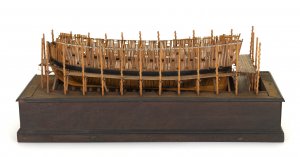
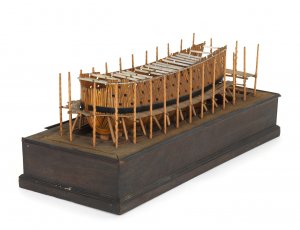
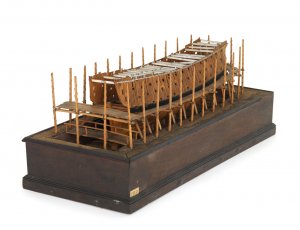
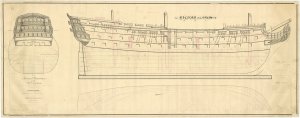


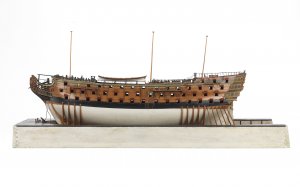
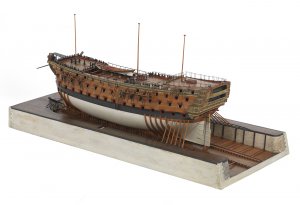
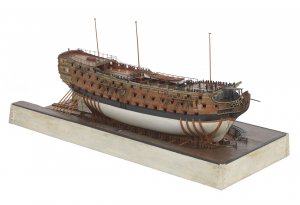
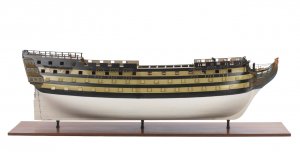

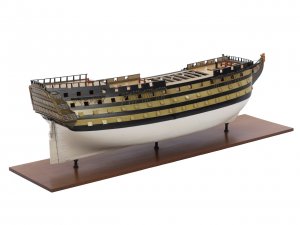
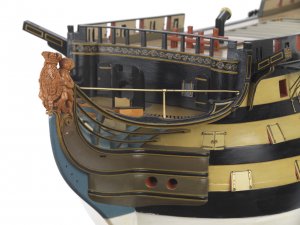

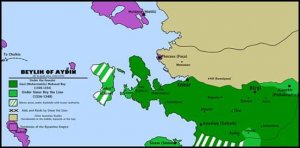

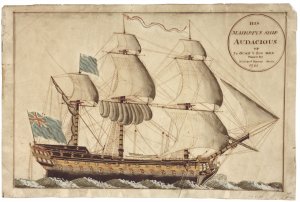


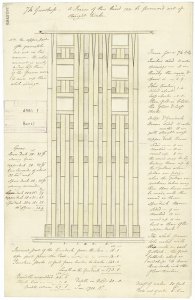

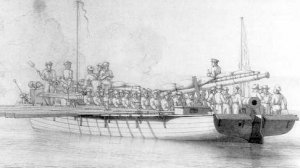
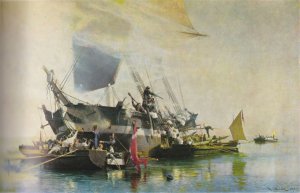
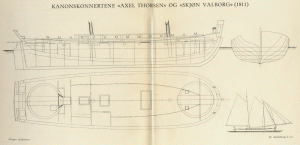
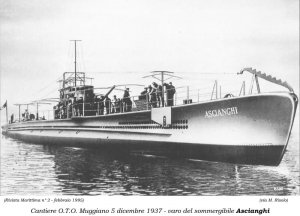

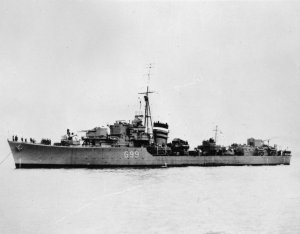


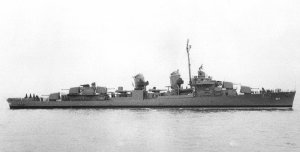
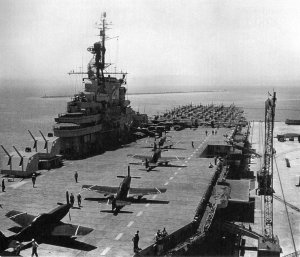
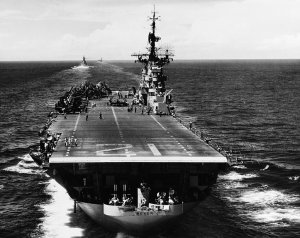
 s aboard the Egyptian munitions ship Star of Alexandria sank the freighter, damaged the harbor of Bône, Algeria, and killed more than 100 persons.
s aboard the Egyptian munitions ship Star of Alexandria sank the freighter, damaged the harbor of Bône, Algeria, and killed more than 100 persons.
